Of course, my first plane to feature tapered wings!
Also known as "the Arsean AS-211"
Manufacturer: Oshira Aerospace, and Poyasakai Kariansk Extensive Production Plant
Ministry of Aerospace Industry Designation: Ayanami-F1, namesake IJN Ayanami, first fighter iteration
Years of Development: 2004-2009
Year of Rollout: 2010 with the Imperial Arsean Air Force
Desired Role: Attack fighter, suited for close air support as well for COIN mission
Status: In production, in service
Primary operators: Imperial Arsean Air Force, Royal Fabellan Army Air Service
Produced: 2010-present
Number built: 131
Powerplant: 2x Poyasakai-AEU Hurion 4B turbofans
Max Top Speed: can range up to 1800+kmh on higher altitude, may range on subsonic speeds since altitude calculations are decisive
Brief Information
The Oshira M55 Strike Rika (named after Rika Furude from Higurashi) is a twin-engine tandem-seat attack fighter suitable for COIN missions, light strike, and CAS missions. The Strike Rika is based on the Poyasakai AFCT (Advanced Fighter Combat Trainer) platform with minor changes in avionics, flight sensors and aerodynamics. A new engine is supplied for her, which is the Poyasakai-AEU (AeroEngine Union) Hurion is highly efficient than the Rolls-Royce Viper turbojet engine originally supplied for the AFCT. Notably, the wings are strengthened and now feature raked wingtips for aerodynamic improvements.
A trainer version exists as the M55T Higurashi (Cicada) and may be used by civil trainee groups for the Karyan Union. She is also the 4th aircraft to be designated as Ayanami once again, and the first to include the -F iteration. The designation rose from the Poyasakai A.25 Ayanami turboprop attacker, with their successors such as the IstrelAvia E480 and the Oshira-Lockheed Martin M50A Strike Satoko.
Development
There were plans to improve the AFCT and give them attack capabilities; Oshira was the first among them to propose the improvement for the aircraft. To implement technologies that were found on 4th generation attackers (according to Poyasakai), newer avionics components were being applied onto the airframe. The Cranston Standard N300 avionics bus was added to the system, alongside new fly-by-wire systems and the Stravius E pulse-doppler radar. The development of the M55A Strike Rika has been evaluated and the airframe is approved, ready for flight.
She entered into service in 2010 with the Imperial Arsean Air Force to cooperate with the M50A Strike Satoko. She can be used as a close air support fighter with long-range and high fuel efficiency.
Design and Characteristics

Tapered wings, heck yeah.
Overview
The M55A is a two-seat shoulder-wing monoplane with the retractable tricycle gear. She has a pointed nose (which can be opened) rather than the snub-nosed trainer counterpart. She can accommodate up to four underwing pylons with an ample range of ground attack ordinances. Maneuverability is improved with the all-moving tailplane (no tailerons, sadly), and the wings were much stronger with raked wingtips added,

The main landing gear is configured to a travel gear setup. On the ground, the gears kneel since they have trailing link suspension. These are designed to absorb the shock on hard landings. As the plane is off the ground, these gears to be retracted onto the compartment.
Engines
When Rolls-Royce Viper turbojets became obsolete for the airframe (which was newly developed), the Poyasakai-AeroEngine Union Hurion tubofan engines found on light trainers were utilized. exclusively for the airframe. These deliver 50.5% of less fuel consumption with high efficiency internals.
Weapons

Strike Rika shoots the ATG-34H Oyashiro and dropping the M.50 general purpose bombs
Air-to-ground missiles, bombs, and rocket pods can be used. Primarily, she is most likely fit for counter-insurgency and close air support missions, with future use of forward air control and patrol roles (to be used by the Civil Gendarmerie).

# Firing the 50mm Hakai H-50S
The 50mm Hakai H-50S autocannon, an improvement over the legacy H-50 anti-tank cannons used on World War II-era aircraft has been integrated into the aircraft, located in the left-side near the inlet. It can be used against tanks, enemy bases, and ships, with reasonable fire rate loaded with HEI bullets.
Avionics

Stravius E pulse-doppler radar
Within the N300 avionics bus comes with a package fit for attack fighters - MAWS, TAWS, and GPWS with an integrated voice-assist system (imaginary V/A Kikuko Inoue), as well as the Stravius E radar. The Stravius E pulse-doppler radar is part of Rediffusion's Stravius family of radars, yet slightly weaker than the A variant. It can be improved by targeting pod support.
M55A
Initial attacker variant. Fit for CAS, COIN, and FAC roles.
Armament:
4x M.50 general purpose bombs
2x ATG-34H Oyashiro missiles
2x RU-311 rocket pods (7 each pod, equal to 14 rockets)
RAYON DV7 targeting pods
Controls
Standard controls. Use AG4 and flap down (VTOL DOWN) for landing assistance. Make sure to land soft, or maybe Ryanair-grade. Don't break Rika's legs, please.
Activation Groups
AG2 to disarm weapons
AG4 to enable gyro levelling
AG6 to open radome
Oh, a special offer-nanodesu!

1.10 version is here, you may try them out for those who have SP 1.10 beta
yes, my first tapered wing aircraft to be applied onto the near future! Thanks to Beefy for giving me sets of advice, too. Openly concerned criticism and more advice (as well before 1.10 finally comes) are appreciated. As always, stay safe and God Bless, everyone! Aim high, comrades-nanodesu! Nipah~
Specifications
Spotlights
- Dimkal 4.6 years ago
- Inuyasha8215 4.6 years ago
General Characteristics
- Predecessor Oshira M55A Rika
- Created On Windows
- Wingspan 44.2ft (13.5m)
- Length 58.8ft (17.9m)
- Height 21.2ft (6.5m)
- Empty Weight 19,554lbs (8,869kg)
- Loaded Weight 32,843lbs (14,897kg)
Performance
- Power/Weight Ratio 1.231
- Wing Loading 50.2lbs/ft2 (245.0kg/m2)
- Wing Area 654.6ft2 (60.8m2)
- Drag Points 3375
Parts
- Number of Parts 383
- Control Surfaces 5
- Performance Cost 1,667

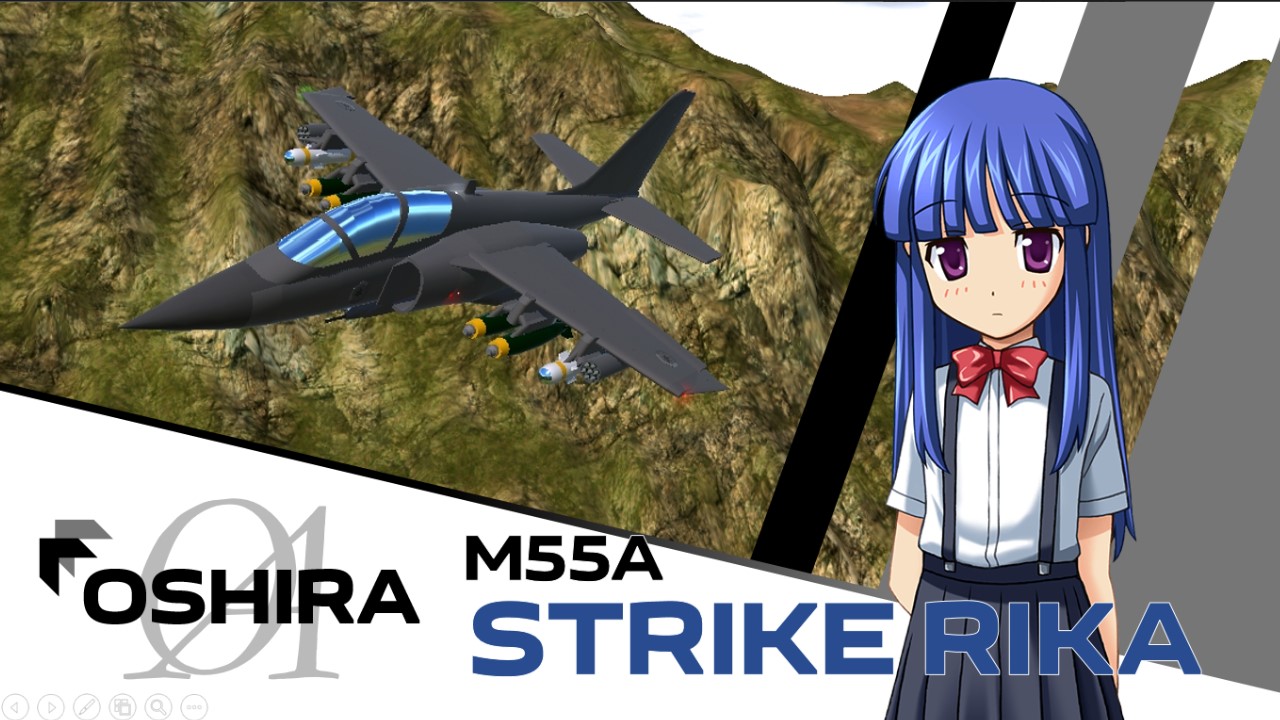
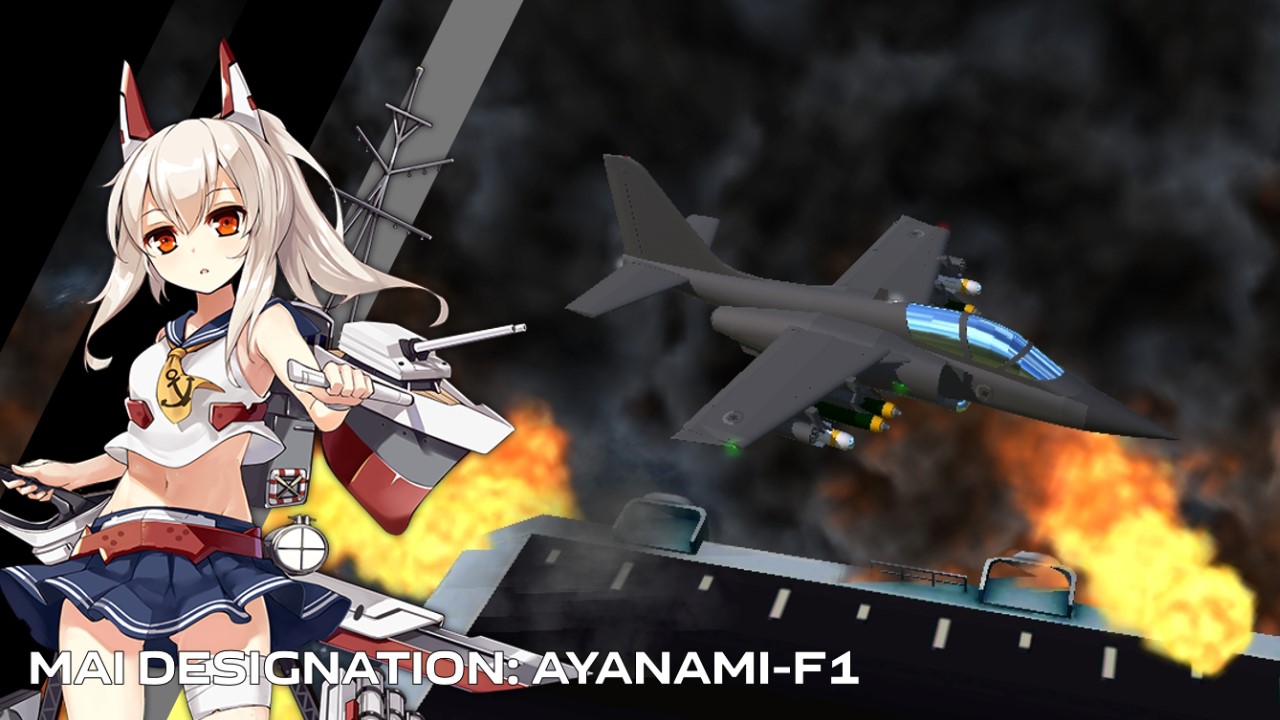
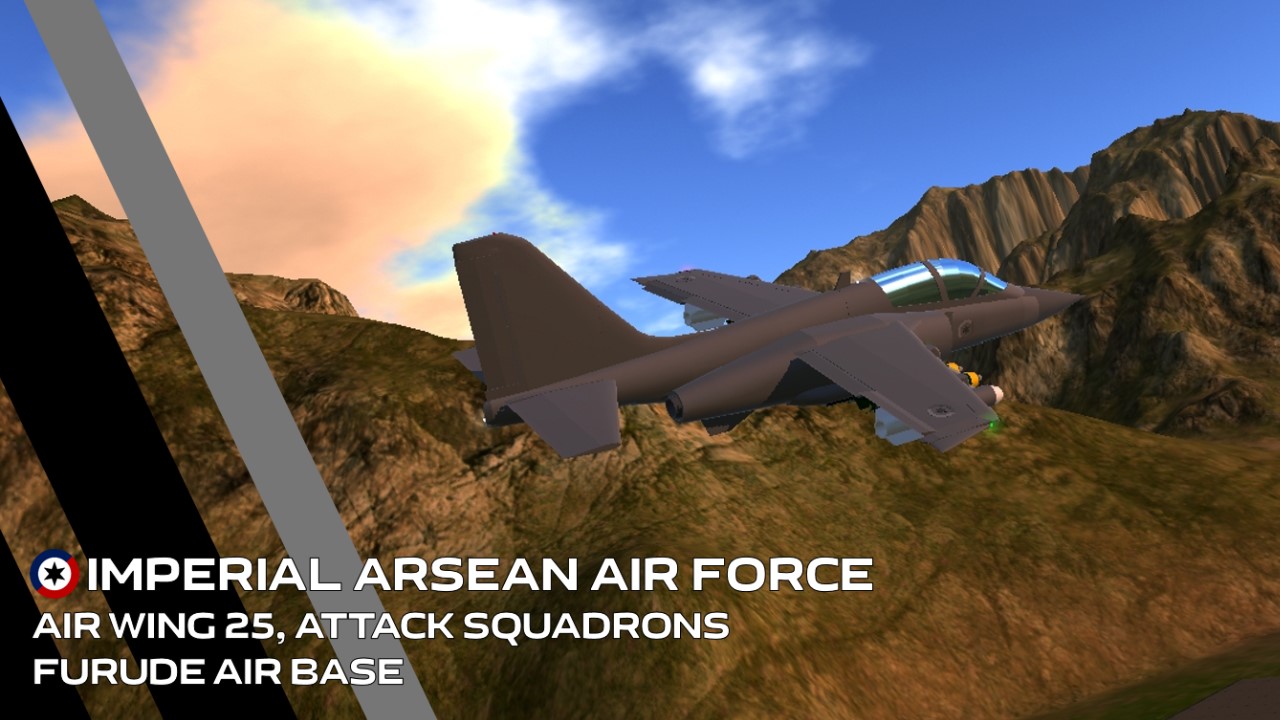
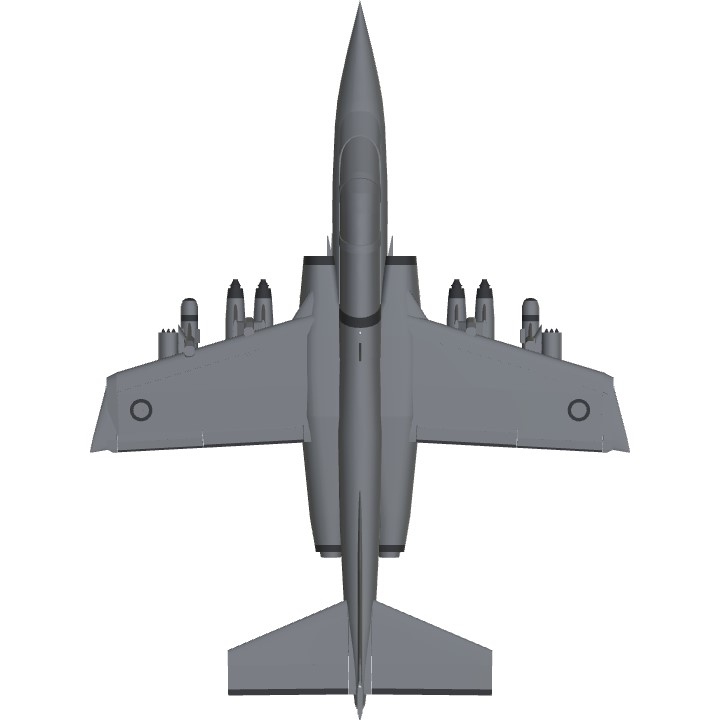
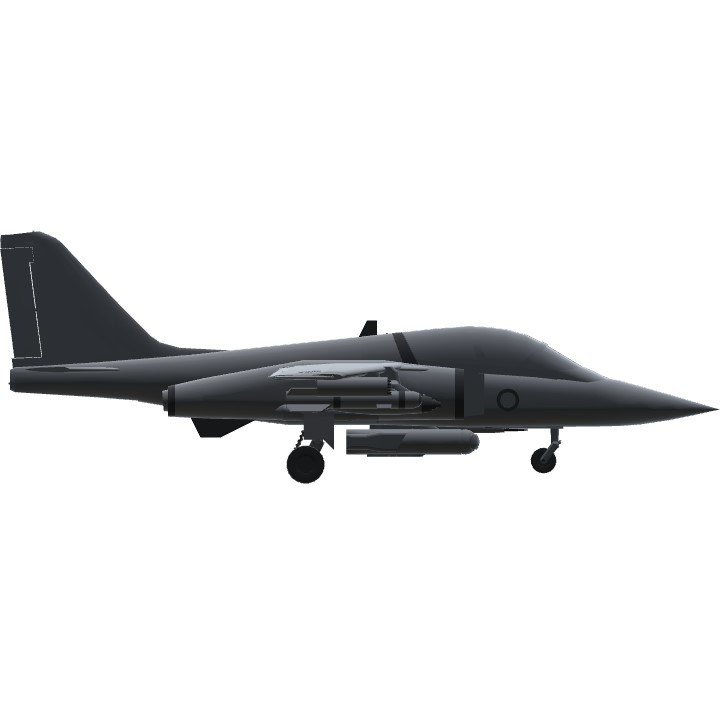
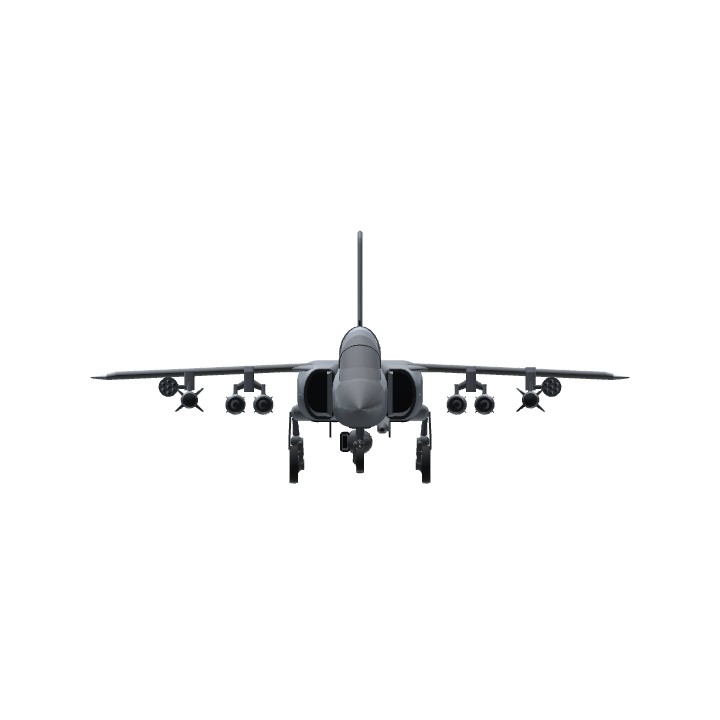
@Bernkastel niiiiipaaaaaah~
Idk*
I used to make a fictional country called arnsea but idm this existed and it has similar name too
You are invited to participate in the 1st Jetfighter Challenge! Your creations have the level to participate, please take a look. Thank you
@TheSupermeAvicenna ooooooo
Like Schools job
@Harunami mii
O _ O
Pretty good waifu jet lmao